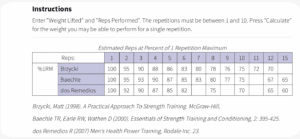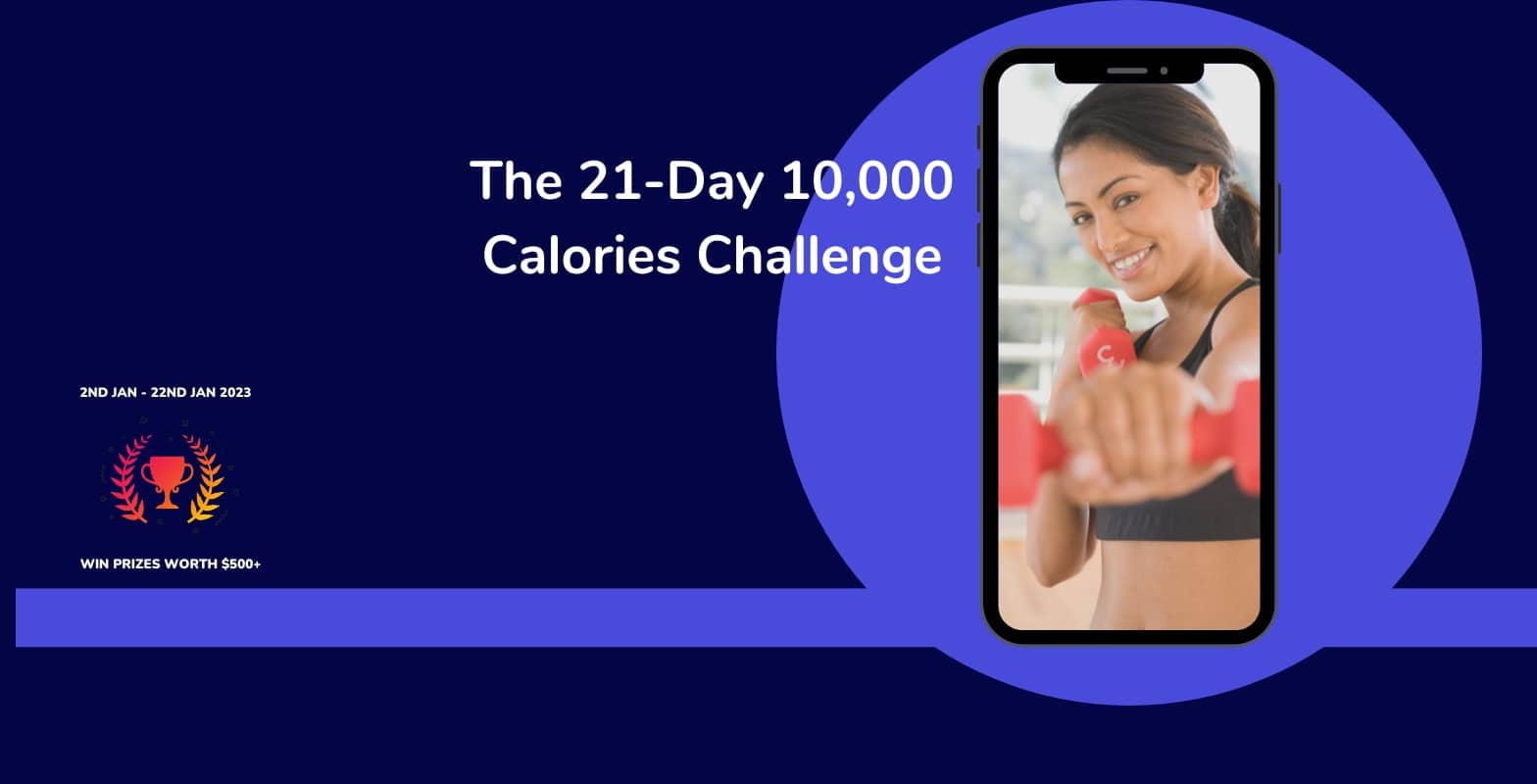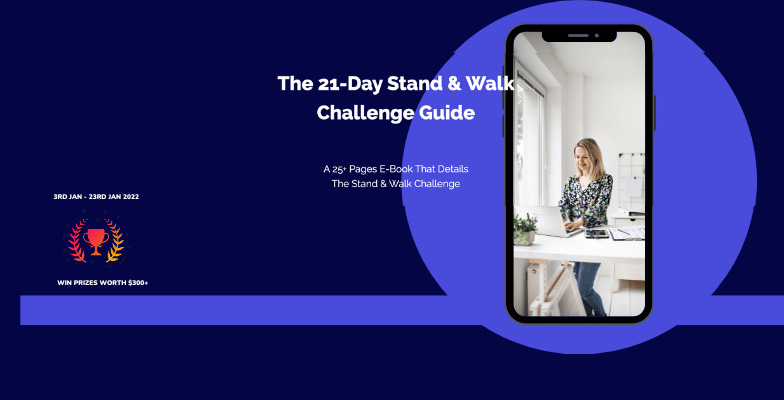How Many Reps To Build Muscle And Lose Fat?

When trying to figure out how many reps to build muscle and lose fat for any given set, you need to learn the simple concept of 1 Rep Max.
But first, let’s learn what a rep or a repetition is.
Repetition is a complete movement through a particular exercise.
Now let’s discuss:
One Rep Max: One rep max is the maximum amount of weight a trainee can lift for any given movement for one rep.
If you can lift 300 lbs on a deadlift for just one rep, no matter how hard you try, your one rep max for a deadlift is 300 lbs.
Now, I don’t recommend you go out there on the gym floor and figure out your one-rep max, especially if you don’t have any experience in lifting weights or are still a beginner. It’s not advisable as it may lead to injury. Fortunately, there is an easy way to figure out your one rep max.
You can head over to the online calculator and figure out your One Rep Max. 1https://exrx.net/Calculators/OneRepMax

Now type in 30kg for 8 reps. Let’s say this is the weight you lift on your Incline Chest Press. Now, roll your eyes towards the right side: Different weights have come up in different boxes, and the subsequent reps are being given.

For example, if you lift 26kg, you can do close to 10-12 reps [See 70% intensity in the table below]. If you pick up 31 kg, the intensity increases, and the number of reps decreases to 5-6 reps [See 85% intensity in the table below]:

The relationship is very clear. If the amount of weight you lift increases, the number of reps decreases.
And using the above table is a brilliant way to figure out at what intensity, which is shown in percentage of your 1 rep max, is shown. The lower the intensity, the higher the number of reps. Just remember this for now, as we shall use this knowledge in just a moment.
Ok, now the question is:
Just How Many Reps Should We Perform For Each Set?
Should we go all out, i.e. focus on one rep max, by lifting super heavyweights, close to 100% intensity, or should we go light and focus on lifting 15 reps which have an intensity of 15 reps or more? This will require a brief discussion of (another) concept.
Concept #2
Once we have an idea about the relationship between the intensity level and the number of reps, we need to know eventually at what intensity we should lift. i.e. should we lift light weights and focus on higher reps like 12, 15 or more, or should we focus on low reps like 10 or less?
When trying to build an ideal male physique, you should know that building muscle is a major part of it (besides, of course, fat loss).
Related Article: How To Build The Ideal Male Physique Part-1
Contrary to what you think or believe, building muscle is a slow process, and especially for people like me who are ectomorphs and have skinny fat genes, it’s even more painfully slow.
Ladies, for you, it’s very, very slow….!
The point that I am trying to make here is that it’s a very BIG myth that lifting weights will make you look bulky. It does not. So when trying to figure out our rep range, we need to pick an intensity level that helps us:
To build muscles, you need to lift weights between 70-85 percent of your 1 rep max, which creates the greatest hypertrophy (a fancy term used when referring to muscle size). If you notice in the above table, this means you would do 5-12 repetitions for every set.
A meta-analysis of 140 studies was done in 2003 in relation to strength training, and the researchers concluded that training with a mean intensity of 60 percent (15 reps) of one repetition maximum elicits maximal gains in untrained individuals, whereas 80 percent (6-7 reps) is most effective in those who are trained. 2https://pubmed.ncbi.nlm.nih.gov/12618576/
Now, some fitness experts swear by the low rep range (3-5), whereas others advocate a more moderate range (7-12). Which is the best for optimal hypertrophy? To answer this question, we need to figure out what exactly muscle hypertrophy is and what types exist.
Muscle hypertrophy is an increase in the size of skeletal muscles. Hypertrophy is of two types:

1) Myofibrillar Hypertrophy
Myofibrillar hypertrophy is an increase in the size and number of the myofibril contractile proteins actin and myosin. When they grow in number within a muscle fiber, the amount of force that can be produced goes up too. Heavy lifting (80-100% of 1 rep max) induces this type of hypertrophy. Focusing on this kind of hypertrophy gives you rock-hard, dense muscles.
2) Sarcoplasmic Hypertrophy
Sarcoplasmic hypertrophy is an increase in non-contractile components (collagen, glycogen, water, etc.) in the muscle cell. This type of hypertrophy may result in greater muscle bulk without increases in strength. Moderate weights (70 – 80 percent of 1 rep max) induce this type of hypertrophy. Focusing on this kind of hypertrophy gives you those puffy bodybuilder muscles.
So keep this in mind:
Myofibrillar hypertrophy: Heavy Lifting: Above 80% intensity: 6 reps or less
Sarcoplasmic hypertrophy: Moderate Lifting: 70-80% intensity: 7 reps to 12 reps.
The former is a more permanent type of muscle growth, whereas the latter is somewhat temporary. You’ll be happy to know that building muscle is like learning how to drive a car.
Once you have learned how to drive a car, you really don’t forget it even when you drive after a year of the gap, the same thing with muscle building. Once you have reached a good level of muscle mass and you take a break, your muscle really never goes away…
Sure there is a loss of glycogen stores, water loss, and sarcoplasmic hypertrophy, so size does decrease, but the size and number of myofibrils do not decrease.
But do note this is not for life, and the point that I am trying to make here is that it’s possible to maintain your muscle mass with very little maintenance work, although the same cannot be said about gaining fat when you stop gymming, fat gain is very prominent.
So after analyzing scores of studies and from my own experience of over a decade in the fitness and muscle-building field, I can say that:
The optimal rep range for muscle growth is 5 -7 reps.
A nice mix of both types of hypertrophy. Our main focus will be to get as strong as possible with this rep range (which is good enough for some sarcoplasmic hypertrophy as well).
Now, in my experience, working out with a rep range of 5 – 7 throughout the year is close to impossible for most trainees and can be very mentally challenging (especially for beginners and intermediates), and that’s the reason some kind of periodization is essential.
The variety of a higher rep scheme (8-10 reps) will add an element of enjoyment and fun and can be a nice break from all that heavy lifting.
Bottom-line
Lifting moderate weights is fun, whereas lifting heavier weights is tough. Most trainees focus on the former and end up with a mediocre physique. Over the long term, your muscle growth will depend on how strong you have gotten.
What do you think about this post? What rep range do you do the most time of the year?
Have any doubts/queries? Let me know in the comments below!

Skill-Based Education.
Global Recognition.
Powerful Community Building
Secure a certificate of completion in as little as a day by graduating from one of our free courses.
Get Access to Our Free Courses. No Credit Card Required.

Fabulous Body Membership
Your All-Access Pass to A Fabulous Body & A Rewarding Career
25+ Certificate Courses & Programs, All Included
15 Day Free Trial, 100% Money-Back Guarantee
About Akash Sehrawat
Akash is a creator of 25+ programs and certificate courses in which more than 200,000 students have enrolled both on Udemy and Fabulous Body's native platform. Akash is also an author of three books that can be found on Amazon. His answers on Quora have gathered more than 12 million views in less than a year.











Thanks for giving me an essential information of do’s and don’ts in body building.
Np:)
Sir your sessions are really really very informative and I loved to study all your curses at Udemy
Glad to know this:)